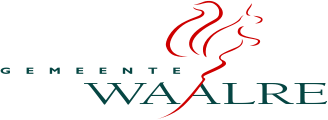Board D
Nature Compensation
During the development of the residential area Waalre Noord, nature was disturbed and destroyed. The municipality has compensated for this by creating new nature. The location of the new nature was strategically chosen, situated between the Dommel River and the existing forest and natural areas around Aalst and Waalre village. This effectively creates an ecological connection between these areas. The area covers approximately 25 hectares and is owned by the municipality of Waalre.
When designing the area, the municipality encountered several challenges. Regulations mandated that the type of nature had to consist of forests. However, a high-voltage transmission line from Tennet runs through the area, where trees are not desired. Therefore, the decision was made to establish herb-rich and fauna-rich grassland, interspersed with patches of shrubbery and heath in areas where it was possible.
Because Scottish Highlanders graze in the area, an FSC-certified chestnut wooden fence has been installed. The same material was used to create a capture pen, which is used for collecting cattle for transportation or veterinary visits. To prevent inbreeding, the animals are regularly exchanged with those from other areas. The expectation is that the Highlanders herd will gradually expand to 12-15 animals in the coming years, depending on the available food in the area.
Recreational aspects were also considered in the development of the area. Walking paths run through the grazing area of the Scottish Highlanders, and "English" style crossings have been created near wooded areas. Latch gates have been installed in the wooden fence. On the outside of the wooden barrier, a recreational bicycle path has been constructed. The roadside along the bicycle path has been seeded with a multi-year, flower-rich grass mixture.
Bicycle Path
The municipality has built a recreational bicycle path to make the area more accessible for recreational purposes. Additionally, two new bicycle bridges have been built between Waalre and Eindhoven and Waalre and Veldhoven. These bridges have created new connections. Sustainability and landscape integration played a significant role in the choice of materials. A novel approach, new to the Netherlands, was chosen. The existing soil was used as the primary raw material for the bicycle path. The soil varies in color in many places due to its composition. The added material is relatively transparent in color, making it appear as if the bicycle path changes color. In reality, the bicycle path takes on the hue of the surroundings, providing excellent landscape integration. The map on the other side of this information panel provides an overview of the recreational bicycle routes in the area.
